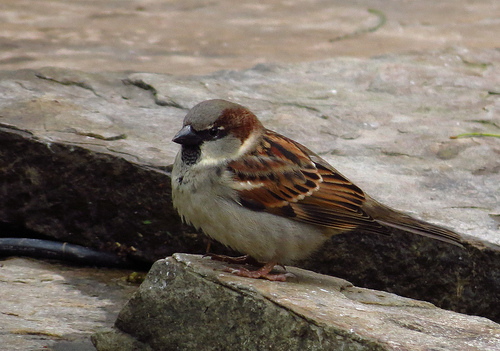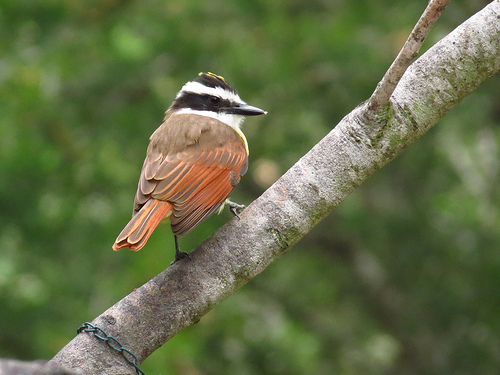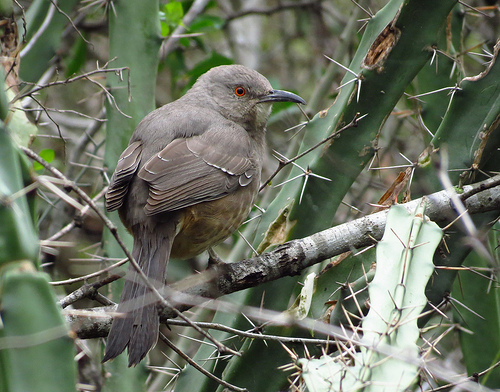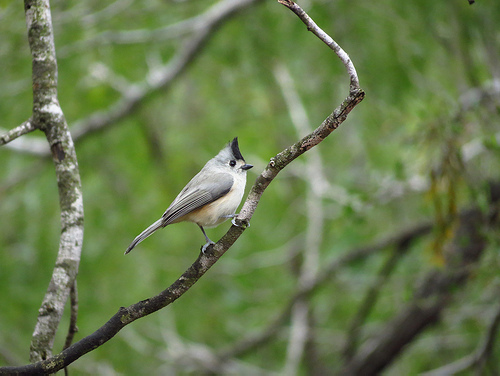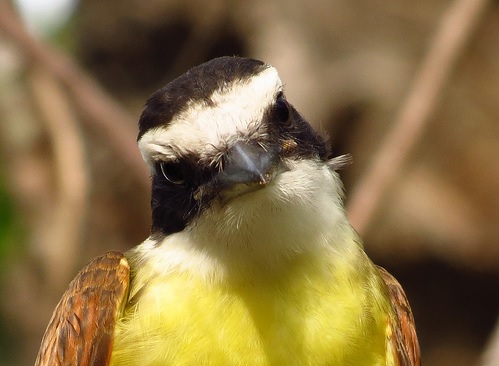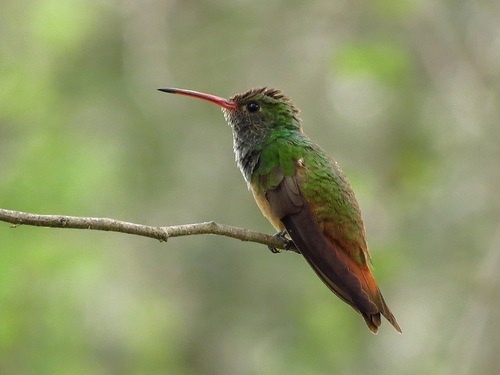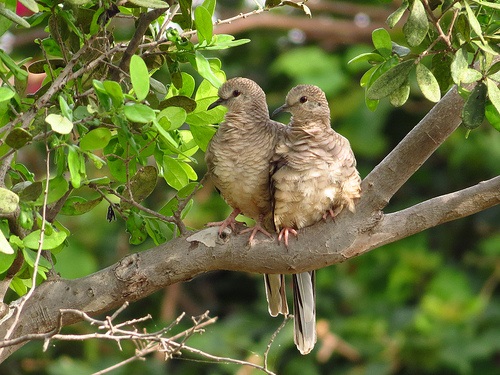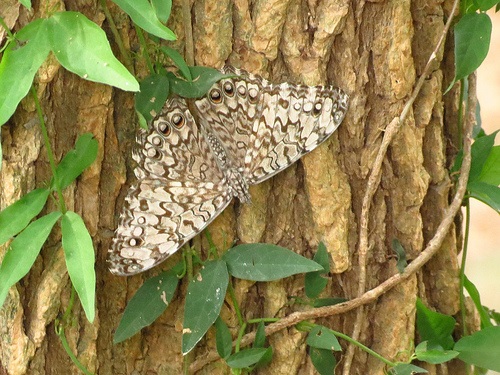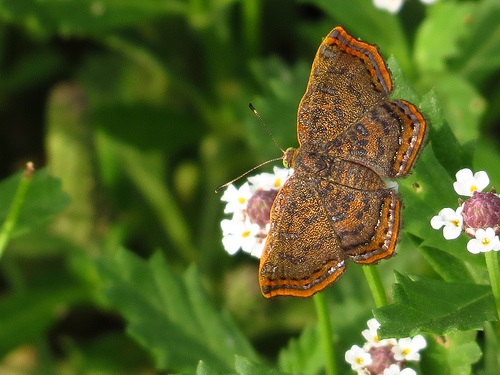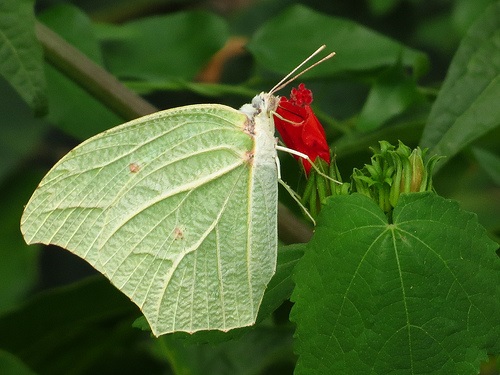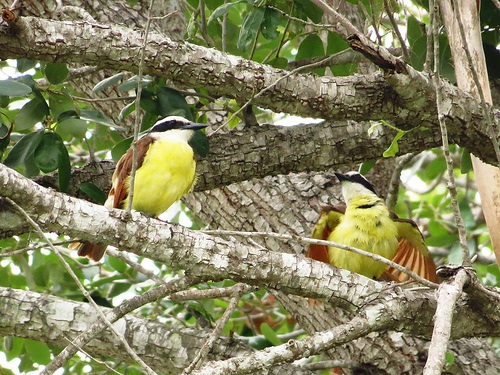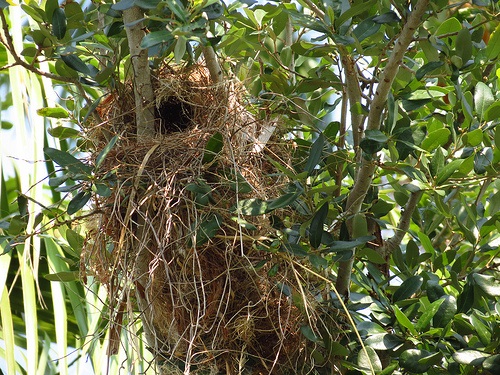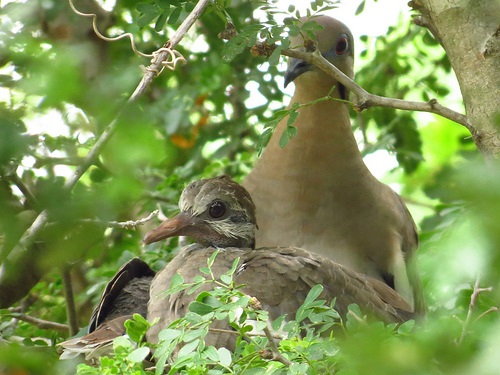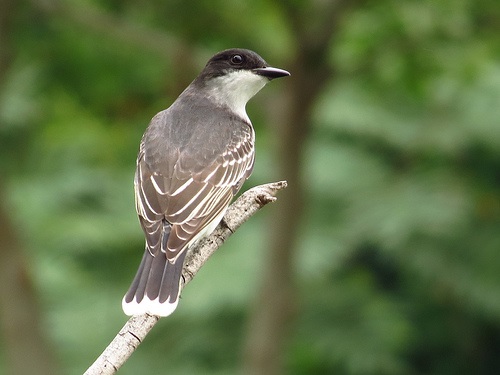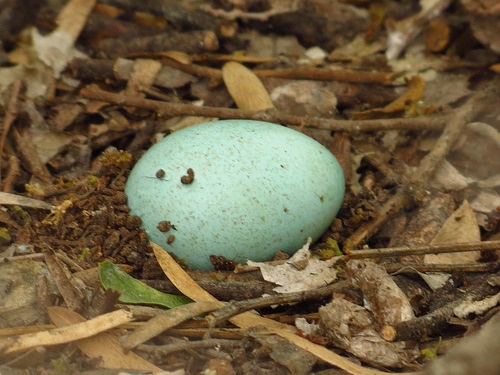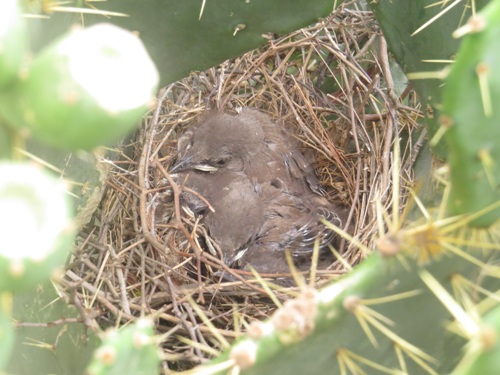All five Songbird Stroll participants bundled up well as we birded through the trails of Quinta Mazatlan this morning. The chachalacas were fluffed up and huddled close to each other throughout most of the morning. Being from the north, I found these temperatures to be refreshing, however for the year-round wildlife found throughout the Rio Grande Valley, these cool temps (especially this late in the winter season) came as a bit of a shock to the wildlife. Great Kiskadees were feeding readily at the suet and orange halves. In between feeding sessions, these birds would perch on a branch and rouse their feathers to retain their warmth. One Gray Catbird was seen this morning, staying quite low to the ground. After watching it for a few minutes, it scratched around the leaf litter in search of a meal. We can greatly help birds out by planting native vegetation and offering birdfeeders. Birds benefit greatly from birdfeeders and native habitat, which are especially important when cold fronts and inclement weather comes through.

Gray Catbird, an uncommon but regular winter resident of the Rio Grande Valley
Participants were treated to great views of fun birds at the birdfeeding stations and along Birding Creek. After a few minutes of enjoying the presence of the flurry of birds, a swift-moving Sharp-shinned Hawk took flight overhead and landed atop a nearby perch, keeping its eye out for sudden movements for a potential meal. Following the Sharp-shinned Hawk was a juvenile Cooper’s Hawk. This gorgeous mid-sized accipiter was molting from juvenile plumage into its first set of adult feathers. The belly feathers were mostly white, and vertically-streaked in brown markings’ however the underwings and flanks of the birds were beginning to show the horizontally-barred in rufous appearance. These rufous feathers are seen throughout the entire underbelly on full-adult Cooper’s Hawks (as well as adult Sharp-shinned Hawks too).

Sharp-shinned Hawk taking flight.

Common Pauraque, resting on the ground this morning. Note how fluffed up he is, to stay warm during this cold front.

Some of the Plain Chachalacas were roosting shoulder-to-shoulder to stay warm.

Eastern Cottontail
The eBird list from this morning’s Songbird Stroll is below.
Black-bellied Whistling-Duck 350
Plain Chachalaca 15
Sharp-shinned Hawk 1
Cooper’s Hawk 1
Harris’s Hawk 1
Buff-bellied Hummingbird 1
Great Kiskadee 3
Tropical Kingbird 2
Black-crested Titmouse 2
House Wren 1
Blue-gray Gnatcatcher 2
Clay-colored Thrush 7
Orange-crowned Warbler 3
Yellow-rumped Warbler 1
Olive Sparrow 3
Northern Cardinal 2
Red-winged Blackbird 1
Great-tailed Grackle 3
House Sparrow 2
Good birding,
Erik Bruhnke



















